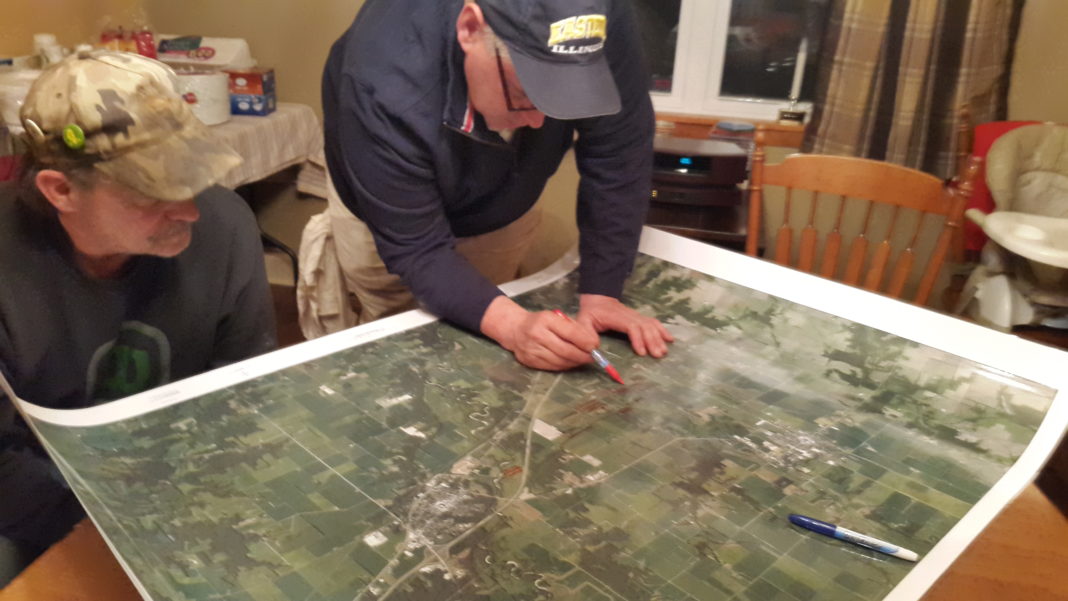Summer is in full swing, but this is the best time of year to set up for the upcoming deer season. Through previous years scouting, this year’s immediate post-season scouting, and regular hunting, you should have a good idea how the deer use the property on which you hunt. The only thing left to do is to get ready for the hunt, and understanding the wind is a good start. Summer is the best time for it, and a good way to be active in deer hunting all year long.
For years I have heard stories of how the wind either made or broke a deer hunt.
Whitetails rely on their ability to smell so they are aware of danger and also aware of their surroundings. Their hearing and eyesight are great, but they do not hold a candle to their ability to detect odors.
The wind is as important to deer as social media is to some people. Using the wind to their advantage is something deer are born with, but it takes some time to get all the kinks worked out.
Deer grow old by knowing what danger is around them before any danger is able to pose an actual threat. Young deer often ignore the wind. A good example is when a young deer walks up on a hunter just to get a better look out of pure curiosity. A mature deer almost never does that, but it happens to me almost every year with a young deer.
As deer begin to age, they begin to only move with the wind in their favor and rely on the wind to alert them to any danger lurking.
Hunters know the importance of setting on a stand on the downwind side of a deer trail or food plot, but they do not take into consideration how much a mature buck uses the wind to move from place to place, where to bed, and how to escape from danger.
Picture in your mind air blowing over land like water moving in a river. Water can be moving at a steady pace, but if the river narrows or passes over boulders, the speed and flow of the water can change.
Hills, ditches, crops, open fields, and timber can affect how air moves over land. Even though the weatherman forecasts that the wind will come from one direction, wind blowing over the natural lay of the land has a way of proving the weatherman wrong. Out of nowhere, it can be swirling, changing directions, and swirling again. This is something hunters are not accustomed to, but deer are and it helps them stay alive.
Whitetails know how the air blows over the land, and it would be to your advantage if you did as well. It is probably easier than you think to see how the wind moves across the land.
The easiest method is to use smoke bombs to see how the smoke moves. Set off a smoke bomb from your stand platform, and follow the smoke until it is gone. Then set off another. Continue doing this until you run out of hunting property. As you go along, take notes and mark an aerial photo.
It might be as easy as moving your stand up or down a few feet to beat the wind. Maybe you need to move to the left or right a few feet. Set off a few smoke bombs and see what works.
Sometimes you will never have a good wind. It seems that it is always blowing on your back. These are the stands where the wind is always swirling one direction to another. Do not hunt from these stands. Not only do these stands let your scent blow in all directions, but deer will want to stay away from the area because they will have a hard time knowing where potential danger is.
I prefer to test the wind in late spring or early summer. Air seems to flow a little “cleaner” this time of year, and if you spook deer, they have plenty of time to forget about the intrusion. A stand set in the right spot will blow your scent in a safe location, like across a highway or an open field that deer are not likely to come from. While you are out testing the wind, go ahead and hang your stands when you find the right spot.
Wind plays a big part in killing a mature deer. Deer depend on the wind when they decide how to move, where to sleep, and where to eat. It is nice to watch the weather, but it is best to know exactly what the wind will do at a particular stand location. Remember, the wind can make or break the hunt. The only way to beat a buck’s nose is to stay downwind or stay home. The latter is not an option.



















![The Best Deer Camp Chili [VIDEO] Deer Chili Ingredients, Tomatoes, Chili Spices](/wp-content/uploads/2015/10/Deer-Chili-Deer-Camp-Recipe-218x150.jpg)
![How to Call Elk Early in the Season [VIDEO]](/wp-content/uploads/2016/08/byers003-218x150.jpg)




![Idiots Disturb Hunter: How Would You Have Handled It? [VIDEO]](/wp-content/uploads/2015/10/DSC00110-e1474487693878-100x70.jpg)
![Albino Buck Shocked to Shed His Antlers [VIDEO]](/wp-content/uploads/2015/10/AlbinoDeer-100x70.jpg)